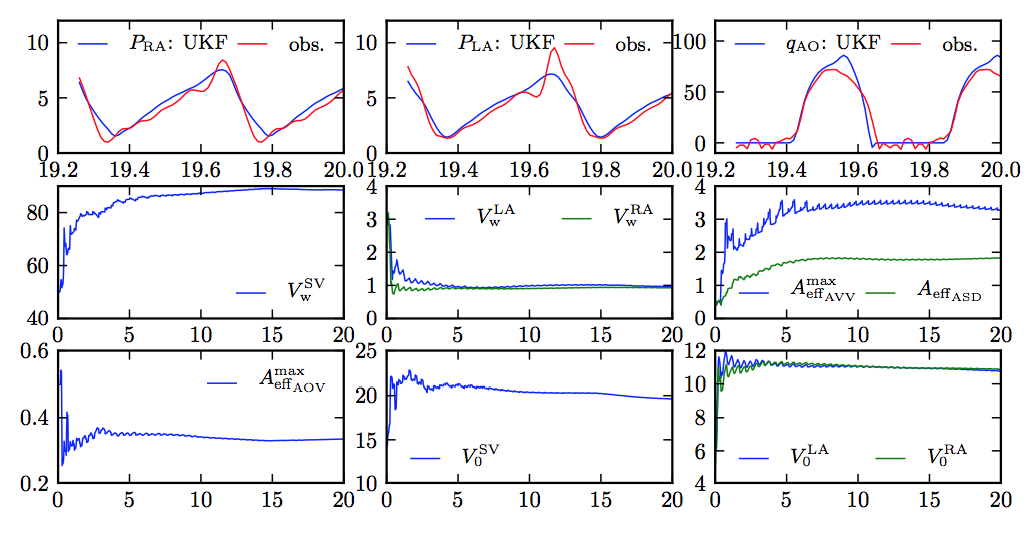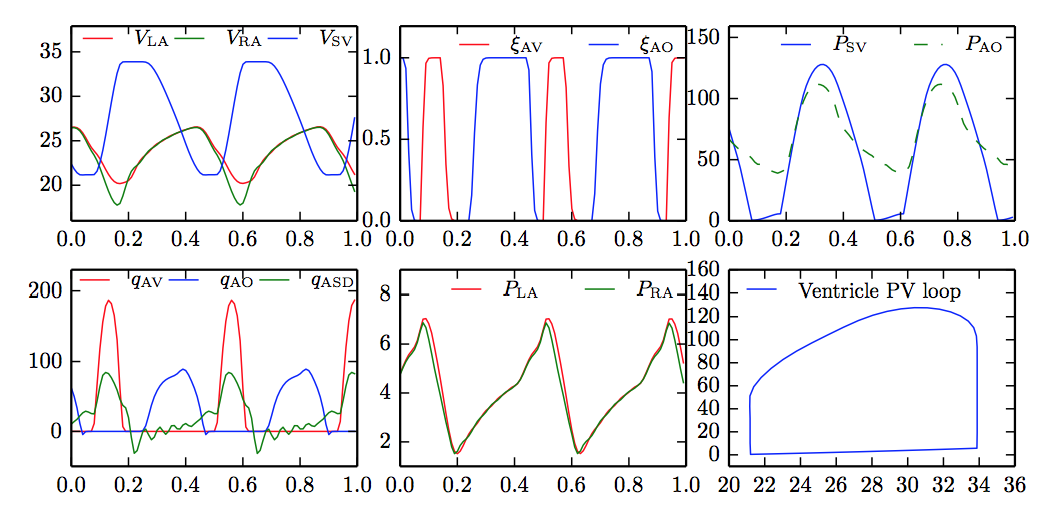Data assimilation for parameter estimation in a single-ventricle heart model.
Patient-specific parameter estimation in a heart model for the physiology of single-ventricle congenital heart disease is performed. Heart chambers are described by a single-fibre mechanics model and valve function is modelled with smooth opening and closure. Patient-specific clinical measurements are used either as boundary conditions in the model or as target curves for parameter estimation. The unscented Kalman filter method of data assimilation is employed for parameter estimation to closely reproduce the measurements and obtain physiologically realistic results.
Figure 1: A single ventricle heart model
Parameters to be estimated
| Parameter | Description |
|---|---|
| Volume of passive left atrium at zero stress | |
| Wall-volume of left atrium at zero stress | |
| Volume of passive right atrium at zero stress | |
| Wall-volume of right atrium at zero stress | |
| Volume of passive single ventricle at zero stress | |
| Wall-volume of single ventricle at zero stress | |
| Maximum effective area of the atrio-ventricular valve | |
| Maximum effective area of the aortic valve | |
| Maximum effective area of the atrioseptal defect |
Clinical measurements
Figure 2: Clinically measured patient data: MRI flow-rates and catheter pressure measurements over time (s)
Parameter estimation
Figure 3: Unscented Kalman filter to estimate the heart-model parameters (with clinical measurements as observations to the filter). time (s) in x-axis; obs.: measurements; V in ml; q in ml/s; P in mmHg; and A in cm2.
Final model results with the estimated parameters
Figure 3: Forward model with estimated parameters; time (s) in x-axis, V in ml, q in ml/s, and P in mmHg. The parameters for the valve indicate opening and closing of the valves (0 indicating fully closed valve and 1 indicating fully open valve)



